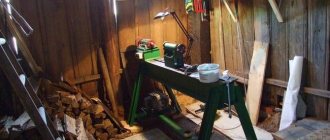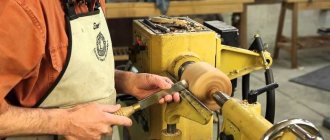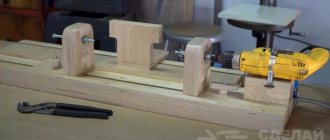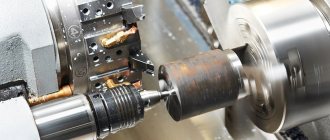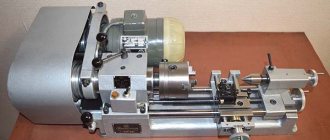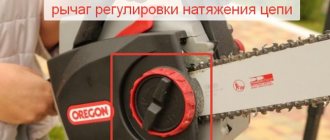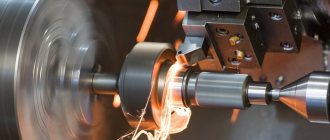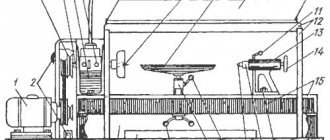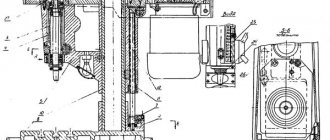Turning is considered an ancient Russian craft. In the old days, craftsmen turned unique products from scrap materials. In ancient times, turners enjoyed success.
They were highly valued and made various antiques. It was done by hand. The words: turner and turner originated in the old days, the old Russian dialect for working on wood, sharpening it.
Properties and characteristics
Using amateur equipment, you can make souvenirs, dishes, small items for the interior, furniture parts, sharpen tools and drills, select grooves, and apply carvings with your own hands. Parts of complex shapes, cone-shaped and cylindrical, are processed.
Using properly selected equipment, you can sharpen not only wood, but also some types of plastics and soft metals.
Features of compact models for home:
- low power - 350 - 500 W;
- small weight - from 17 to 40 kg;
- workpiece rotation speed within 400 - 3400 rpm.
On the most productive lathes of this class, you can make small batches of parts for sale with your own hands.
Electric motor for machine
The basis of the lathe drive is the engine. When choosing this unit, it is important to pay attention to its main characteristic – power. For a home machine, models with a power from 1200 to 2000 W are suitable. The type of connection is important; there are single-phase and three-phase motors.
In a low-power table lathe, you can use a motor from a washing machine. It is unlikely to cope with the processing of large workpieces, but it will help produce small decorative elements and kitchen utensils.
Design and principle of operation
All components and parts of the lathe are located on the frame or bed. The main design elements: a front support with a drive and a transmission shaft, a rear support for fixing the part and a mobile stand for the cutter. A drive chuck is located in the chuck, which transmits rotational motion to the workpiece. The tailstock holds the free end of the workpiece; it is especially necessary when working with long parts. A cutter stand or support supports the cutter in the right place.
The workpiece is fixed in a lathe between the centers of supports or on a faceplate. When working with wood blanks, the first method is most often used, which does not allow processing the ends. Mounting on a faceplate is used when processing end surfaces; it is more reliable. The part is secured using bolts rather than chuck teeth.
When fastening, it is important to center the part so that it does not “beat” during movement. For this purpose, an angular type center finder is provided.
The cutter is fed manually; it is fixed only when working with a copier. In other cases, the master holds the cutter with his own hands with emphasis on the thrust bearing.
The workpiece is turned in two passes:
- rough: at an angle of up to 30 degrees;
- final: at an angle of up to 45 degrees.
For each pass, material no more than 1 millimeter thick is removed.
When choosing a lathe for home use, you should pay attention to the amount of spindle runout. A very good result is 0.02 mm, because working with wood processing equipment with your own hands does not imply perfect accuracy.
ROTARY FRONT STOCK
The headstock may be able to rotate so that the spindle is at right angles to the bed. This is convenient when working with short workpieces of large diameters. This is a significant feature that is worth paying extra for. Another advantage is the ability to move the headstock along the bed.
Review of the most popular models
Let's look at the characteristics of several models of lathes for amateur use.
| Kinzo 48P5600 | Proxxon DB250 | Jet JML-1014i | Caliber STD-350 | Corvette 71 | |
| Type | desktop | desktop | desktop | desktop | desktop |
| Power, W | 350 | 100 | 370 | 350 | 370 |
| Electric motor type | asynchronous | collector | collector | collector | asynchronous |
| Rotation speed, rpm | 850 — 2150 | 1000-5000 | 500 — 3900 | 500 — 3400 | 760 — 3200 |
| Maximum workpiece dimensions | 1000 x 350 | 250 x 80 | 350 x 250 | 330 x 250 | 420 x 250 |
| Spindle size | 1 x 8″ | M16x1 | 1 x 8″ | 1 x 8″ | 1 x 8″ |
| Weight, kg | 38 | 2 | 30 | 17,5 | 38 |
Table 1. Technical characteristics of lathes for home
Kinzo 48P5600: the bed is made of rectangular pipes, it is possible to use an extension for processing workpieces longer than 40 cm. You can change the speed of rotation of the workpiece by rearranging the belt on the pulleys (4 pairs). When purchasing such a machine, you should pay attention to the alignment of the front and rear axles. When pressed by the rear stand, the base may become deformed. Fragile plastic handles with clamping bolts.
Jet JML-1014i: solid cast iron frame. The rotation speed changes smoothly in several ranges. To change the range, you need to move the belt on the pulley. It works very quietly, it is convenient to set the speed on the electronic unit. To lock the spindle, a push handle is provided, which is located on the left.
Proxxon DB250: aluminum frame, very small in size, allows you to turn only the smallest parts for aircraft modeling. During operation, it is advisable to attach the device to a workbench, otherwise the light alloy structure will dangle. It works very quietly, there is no beating, but the power of the machine is low, so you need to work carefully and slowly.
Corvette 71: cast iron frame, rotation speed is changed by rearranging the belt pulleys. Despite its small size, the design is no different from professional turning equipment. The engine maintains stable speeds, practically does not vibrate and makes no noise. The tool rest is short, it is clearly not enough for internal turning of parts longer than 110 mm. Equipped with a convenient eccentric mechanism for rearranging the tool rest.
Caliber STD-350: neat frame made of cast iron. The center of the rear and front axles may not coincide, which is very difficult when working with short parts made of dense wood. The spindle does not hit, it is easy to adjust, the frame is durable, and it works quietly. Weak frequency regulator - torque at the minimum position is almost impossible to use.
Headstock and tailstock
The workpiece being processed is clamped between two devices called the headstock and tailstock. Rotation from the engine is transmitted to the front one, which is why it is a more complex unit.
Structurally, the headstock of a homemade lathe is a metal U-shaped structure, between the side faces of which a shaft and one or more pulleys are mounted on bearings. The body of this unit can be made of thick steel; bolts of sufficient length are suitable for assembling it into a single whole.
An important part of the headstock, as well as the machine as a whole, is the shaft, a spindle with three or four pins designed to fix the workpiece. This shaft is passed through the bearing of one of the cheeks of the U-shaped housing, then pulleys are mounted on it. To fasten them, a key or a means for fixing cylindrical parts is used, the second cheek is put on last, and the structure is securely tightened with bolts.
The headstock and tailstock are installed on the bed. It is important to understand that the axes of rotation of both shafts must completely coincide. Otherwise, breakage of the workpiece, failure of the machine, and possibly injury to the turner are likely.
Homemade lathe
With your own hands at home, you can assemble a turning device that is in no way inferior to a factory one.
Materials for the frame: wood, ferrous metal (welded), light alloys (bolted), textolite. The main thing is that the structure is stable and strong, and that the centers of the headstocks coincide.
Drive: the easiest way is to take a ready-made part from an old drill, but an asynchronous electric motor from any equipment with a power of at least 150 W will do.
Guides: depending on the material of the case, this can be a gap in the base, wooden slats, or a do-it-yourself aluminum rail.
Review of a homemade lathe for the home and demonstration of its operation in the first video and selection of a finished one in the second:
A specialized wood lathe allows you to make various products and their copies from wood, provided you have a copying device. A woodworking turning unit is lighter when compared to a metalworking unit, and also uses less powerful electric motors. If we are talking about industrial applications, then CNC models are relevant here, and the faceplate serves as a workpiece clamp.
All machines on the market are usually divided into three groups.
- Industrial. These are mainly CNC models, the weight of which is about 100-200 kg on average. The power of the electric motors used is 1 kW. Distinctive features are increased productivity, extensive functionality and the ability to put production on stream. The retainer is a faceplate or headstocks.
- Semi-professional or intended for small production. The weight of the units varies from 40 to 100 kg. Power ranges from 500 to 900 kW. The technical characteristics allow the use of a semi-professional woodworking machine for small production or a workshop.
- Household. They are tabletop. A similar woodworking machine weighs no more than 40 kg. The bulk of such units usually weighs 20-25 kg. They are distinguished by their compactness and mobility, but not by their productivity. They are used only for producing single products, although they can be equipped with a CNC module.
Depending on the functionality, turning units can be:
- Combined. Their specialization is performing a wide range of operations on one machine. At the same time, the price of such machines is high, and their processing quality does not always correspond to the expectations and financial resources invested;
- Specialized. Specialized machines make it possible to produce various crafts and wood-based products, working according to certain limited patterns.
It is important to note that specialized devices are divided into three subtypes:
- Turning and milling. With their help you can make, process and bore grooves.
- Lathe-screw. This type of woodworking specialized machine is used to work with cone-shaped products and apply threads.
- CNC. Multifunctional devices that perform a whole cycle of woodworking operations. An important feature of the CNC module is that it performs all the work automatically. Operator involvement is minimal. His task is to set the desired program from the CNC list.
At the same time, any woodworking unit is capable of:
- trim;
- grind;
- Drill;
- Make grooves;
- Cut thread;
- Make holes;
- Grind the ends;
- Grind;
- Make openings.
Specifications
Many craftsmen make a wood lathe with their own hands, while others prefer to purchase ready-made devices. When there are such models on the market as STD 120m, Corvette 74, STD 1000, Holzstar db1100, no chisels or planes are needed.
Experts advise focusing on the following parameters.
- Motor power. Electric motors determine the processing capabilities of the machine, but at the same time affect energy consumption. Industrial models use engines with a power of 1-2 kW. And for household needs they choose 300-500 W.
- Workpiece sizes. Here you should pay attention to the center-to-center distances to the machine bed.
- Spindle head rotation speed. This is the main working tool, capable of rotating at a frequency of 400 to 35,000 revolutions per minute. The quality of product processing directly depends on this parameter.
- Manufacturer and warranty. Many experts recommend choosing brands like Corvette, STD and Holzstar.
The choice of the presented versions of devices is not limited, but they are deservedly popular.
Design Features
Let's study the general design principle of such equipment.
- The basis is the bed, the quality of which determines the accuracy of woodworking and the stability of the turning equipment itself. All elements and mechanisms are located directly on the frame. The best option for making a frame is cast iron and solid casting.
- The workpieces are mounted in driving chucks, which are located on a rotating spindle. A faceplate or tailstock with a rear chuck allows you to fix the product on both sides at once.
- Depending on the length of the cutter, the thrust bearing moves. The cutter partially rests on it while processing workpieces.
- Workpieces can be fixed in two ways. For the first, the centers of two cartridges are used, and for the second, a faceplate is used. If you prefer to make your own homemade wood lathe, you will need a faceplate when turning the ends. The peculiarity is that the faceplate provides for fastening products with bolts, and not with points. A faceplate is preferable because it fixes the product more reliably.
- The most important design difference between turning units for processing metal and wood is that the woodworking version involves manual feeding of the cutter to the product.
Review of mini-lathe models
If you are faced with the task of purchasing a wood lathe for domestic use, then when searching for equipment, the choice should be made in favor of imported models. And the point here is not only that the machines of domestic companies are of lower quality in comparison with foreign analogues. Imported models of wood lathes have a higher power class.
Homemade mini-machine for wood.
They can be used for industrial purposes. The choice of such equipment is quite large. Regardless of the country of origin, most models are assembled in China. Therefore, when choosing such equipment for your workshop, you need to pay attention to parameters such as price, quality and functionality. The best choice would be a machine that has the optimal ratio of these parameters.
READ Where is a file used?
Proma DSO-1000
If we talk about the most affordable model of an imported wood lathe, then this is the Czech unit Proma DSO-1000. Its minimum cost is 6,500 rubles. It has a power of 400 W. It has the ability to adjust the spindle speed in the range from 850 to 2500 rpm. The weight of this machine is 35 kg. It has fairly compact dimensions: 1450x250x370 mm.
Proma DSO-1000.
HolzStar DB450
If you are looking for a machine with an optimal price-quality ratio, then you should pay attention to the HolzStar DB450 model. This Chinese-made machine has a minimum price tag of 12,000 rubles. This mini-lathe is equipped with a frame made of cast iron, due to which vibration is minimal when using it. This means that when performing operations, small parts will be processed with high precision. However, the main advantage of this equipment over its competitors is the high spindle speed. This parameter can be changed in the range from 500 to 3150 rpm. As for the power of the equipment, this machine has this parameter of 370 W. The weight of the machine is 38 kg, and its dimensions are small - 820x300x430 mm.
HolzStar DB450.
JET JWL-1220
Another model worth mentioning is the Chinese JET JWL-1220 lathe. It differs from the models presented above in its high price. The minimum cost of this equipment is 18,500 rubles. However, by paying that kind of money, you get equipment with a large power of 750 W. The main element of this equipment (bed) is made of gray cast iron. A number of important elements of this machine are made from it. Thanks to the choice of such material, vibrations are eliminated when performing operations on this equipment. The engine with which this machine is equipped has 6 speeds and two modes.
When using the first mode, the rotation speed varies from 400 to 3300 rpm. The second has smooth adjustment from 500 to 3900 rpm. This lathe can be easily locked using the quick release lever. The machine is equipped with rubber feet, thanks to which it cannot move during operations. Additionally, with the equipment set, the manufacturer offers a bed extension 710 mm long. As for the weight of this equipment, it is 45 kg.
Table of comparative characteristics of modern models of wood lathes.
Popular models
Working on a wood lathe is a fairly common activity in home workshops and factories. If you need a unit for personal purposes, drawings, photos and video instructions will allow you to make an excellent unit with your own hands.
Or pick up a chisel and get to work. Chisels are an old-fashioned alternative to woodworking machines. So chisels, planes and other hand tools will not achieve the same result as automated chisels, that is, machines. They will be with CNC or without a CNC module, it’s up to you to decide.
The list of popular models includes the following modern “chisels”:
- Corvette 74;
- STD 1000;
- STD 120m;
- Holzstar db1100.
Let's consider them separately.
- The Corvette 74 is a 550 watt floor standing unit. The diameter and processing width are 300 and 845 mm, respectively. The Corvette weighs 74-85 kg. The spindle speed range on the Corvette 74 machine is from 500 to 2000 rpm. The current cost is 30 thousand rubles.
- STD 1000. Drive the unit 22.9 kg. The maximum processing diameter of the model is 350 mm. The power of the unit is 400 W, and the rotation speed is from 810 to 2480 rpm. The price of STD 1000 is about 11 thousand rubles.
- STD 120m weighs 100 kg and operates on a 380 V network. The power is 0.4 kW. The processing diameter is up to 190 mm, and the rotation speed of the STD 120m spindle is from 1100 to 2150 revolutions per minute. Price - about 45 thousand rubles.
- The Holzstar db1100 is a German machine weighing 92 kg with 10 speeds and a maximum processing diameter of 358 mm. The unit is powered by a 220 V network. The estimated price is 55-60 thousand rubles.
Do you need a CNC model, a high-strength faceplate and a wide range of adjustments if you are going to do general small crafts? No. CNC and faceplate are the prerogative of modern, powerful devices with high functionality. If you want to make ordinary crafts, you can try to assemble the machine yourself.
If large-scale production is planned, working with large products, the faceplate as a clamp will become indispensable, and the CNC module will simplify the work.
Everyone who is interested in turning sooner or later has a question about purchasing. A modern wood turning machine is a universal unit for mechanical processing of wood. It is designed to be multifunctional. He has dozens of operations on his account. This includes turning, threading, drilling, creating holes and puzzles. It processes ends, shaped workpieces, conical and cylindrical surfaces. A lathe is equally indispensable for woodworking industries of various sizes, as well as for framing and carpentry workshops. Buying a lathe requires a reasonable approach, weighing all the pros and cons. After all, we are talking about very expensive equipment. How to choose a wood lathe so that the investment is worth it? You can look through hundreds of sites, but you will never be sure of the correct choice. The first step is to identify the area of tasks for the future machine. This will determine the selection options.
How to make a wood lathe yourself
Manufacturing a lathe for wood processing requires compliance with certain rules:
- drive - an old but properly working tool for sharpening knives with two sharpening stones;
- the tailstock can be made from elements of a powerful electric drill;
- the headstock is formed from a sharpening tool;
- a metal profile is used to make the frame.
Before starting assembly, it is recommended to create an accurate drawing or use a ready-made one suitable for the tasks at hand.
If your own knowledge in this area is not enough, then it is better to entrust the drawing up of drawings to professionals in order to eliminate errors in operation and malfunctions in the finished machine.
Necessary tool
It is impossible to create a full-fledged or desktop mini unit without a set of tools:
- electric drill (manual);
- drills of different diameters;
- files (they must have a special coating with different grain sizes);
- Bulgarian;
- discs for cutting and grinding;
- welding machine;
- channel;
- metal corner with thick walls;
- pipes (2 pieces) with different diameters so that they can be inserted into each other;
- steel strip 2 cm;
- steel strip 4 cm;
- drive belt (you will need to put it on).
To fasten the elements, you need to purchase nuts, screws, and bolts.
Let's get started
Before you start working, you must carefully study the available drawings. It is recommended to check that all tools and consumables are available. You will need to make a bed and a frame - the basis of the future unit.
bed
To make this element you will need channels. The prepared parts of the structure need to be attached to each other. A welding machine is used for this purpose. In order to install an electric knife sharpening machine, you need to use a sheet of thick plywood as a base.
Frame
This element of the machine is installed on the bed. It will need to be done in such a way as to leave the opportunity to subsequently freely move the units and parts of the structure, according to the given program for creating a wooden part. For reinforcement, a sheet of thick plywood is also used, which holds the machine and provides additional support.
Spindle box
To make this part of the structure you will need a file. The metal-working unit allows you to sharpen in a short time. Forming must be done at two points: at the location of the blade and at the tail. After this you will need to make a handle with a locking ring.
DESIGN AND DIFFERENT TYPES OF LATHES
The wood turning machine consists of:
- Beds (the basis for placing the necessary mechanisms and elements).
- Drive chuck (headstock). Responsible for rotating the workpiece.
- Rotating spindle. Adjusts the rotation speed.
- Tailstock. Provides fixation of the part.
- Movable thrust bearing. Sets the optimal distance to the workpiece
Examples of work performed on a wood lathe
Lathes come in tabletop and bed-mounted types. The frames can be cast iron, stable and durable. There are lightweight cast aluminum frames. Their advantage is the complete absence of corrosion. A desktop (portable) lathe is cheaper. It can also be installed on a special workbench or stand. To do this, the housing must have appropriate mounting holes. A wood lathe can weigh from 18 kg to 90 kg. The higher the weight, the less vibration will be felt. It's comfortable. But for home craftsmen, buying large lathes is not profitable. You can get by with a mini-machine. Machines also differ in phases. There are two options here - 220 V or 380 V. A single-phase machine is often purchased for the home. It all depends on the network you have. A three-phase lathe is generally more powerful. This is a productive stationary equipment, so it is not needed for rare private work around the house. The main criteria for choosing a lathe are the power and accuracy of processing parts. If turning is a hobby, then fundamental accuracy is not required. Of course, if the machine can perform fairly accurate work, then this is good. But the price of a functional and very accurate machine is higher. Often craftsmen working at home take care of silent work. A low-power machine makes less noise. If you choose a lathe from famous and reliable brands, then the very powerful motor is also noise-proof. For more detailed information, we have prepared the most important technical characteristics of lathes. They directly indicate their working potential.
SPINDLE
The threaded headstock spindle accepts screw-on accessories such as chucks, so the threads must be standard or you will be limited in your choice of accessories. On small machines, 1″x8TPI or M33x3.5 thread is standard, which makes upgrading the machine less expensive. This means that the existing threaded equipment of the machine can be transferred to the new unit if you decide to update the machine. An important point, since lathe chucks and consumables cost a significant amount of money.
POWER IS THE MAIN INDICATOR OF PERFORMANCE AND ENDURANCE
When choosing power, the main thing is to decide what you need the machine for. If for a hobby or “folk art” products, then buy an inexpensive household-grade lathe. These are mini machines. They are ideal for small-scale production. They begin counting their power indicators at 350 W and end at 500 W. For medium-volume work, you should choose a wood lathe with a power of 500W-1000W. The power of a lathe is over 1000 W - this is already relevant for the large-scale industrial sector. Important recommendation: for professional work with heavy loads, choose more powerful machines. Then, when turning or drilling is set to maximum, you will not hear the engine slipping or a drop in speed. But if the motor is weak and does not pull the load, then this has a bad effect not only on the quality of work, but also on the service life of the engine.
DIMENSIONS OF PROCESSED WORKPIECES
The length and diameter of the workpiece are important when choosing. For entry-level work, you can buy a household lathe. It works with small workpieces or medium-sized blanks. The length of such blanks is up to half a meter, the diameter is a quarter of a meter maximum. It’s clear that you won’t get much speed on a household machine. If you need to process “hundreds” of wood every day, then, of course, choose a wood lathe of a higher class. From professional equipment. Such machines have extensions so that long parts can be sharpened. It is possible to turn parts about 1 meter long.
Manufacturing principle
It is recommended to make a wood lathe using ready-made components and parts, minimizing the manufacture of parts yourself.
At the initial stage, it is recommended to make a drawing indicating all dimensions. If possible, it is recommended to make a model out of cardboard; it will show all the subtle parts of the project. This is cheaper than correcting errors during assembly from expensive materials.
The second stage is cutting the material. When working with plywood, you will need a jigsaw or circular saw. First, the machine bed is cut out, glued and bolted together. The second stage is the design of the drive and headstock. Next is work on the tailstock and tool rest.
At the final stage, additional devices are manufactured - a copier, a milling device, and a grinding table. As practice shows, you can make a miniature lathe for modeling from plywood 18-24 mm thick in 3-4 days.
Installing the headstock and tailstock
The headstock of a lathe can be made in different design solutions. For its manufacture, you can use either ready-made units with bearings and an axle, or home-made ones.
In the first case, you can fit a hub with an axle from the front wheel of a bicycle under the turning shaft; in the second, you can simply buy two sealed bearings with an internal diameter of 10 mm, a bolt 10 mm thick, and several washers and nuts.
The supports for the headstock assembly are cut out of plywood. Holes for bearings are drilled in them. And then, bearings with a turning shaft are fixed in the holes and secured with clamping bolts. After this, the headstock of the lathe is firmly attached to the bed.
The tailstock assembly is made according to the template of the front headstock supports. A correctly made tailstock of a lathe with your own hands will be when the center of the lathe chuck and the cone center coincide. The easiest way to do this is by holding a regular pencil in the chuck and bringing the tailstock closer to it, marking the center point. After this, you can drill a hole and insert a bolt with a nut and locknut and a center sharpened to a cone.
Podruchnik
A tool rest for a wood lathe is needed as a stop on which the cutter will rest during operation. It is optimal to make the tool rest adjustable in height and so that it can move and be fixed anywhere on the frame between the headstocks. The material can be different - metal or even plywood, the main thing is that its edge on which the cutter will rest is rigid, so it is recommended to reinforce it with a metal plate. It is recommended to make the tool rest of a wood lathe adjustable - this will allow you to expand the number of operations on the machine and process parts not only along, but also across the axis of the machine.
SPINDLE AND ITS FEATURES
The rotation speed and thread pitch of the spindle determine the performance. That is, the speed and quality of processing. These two values are responsible for the timely and full-scale processing process. The higher the requirements for the volume and speed of work, the higher the spindle speed must be. It is clear that the motor power must match. The lower the power, the lower the spindle speed. The quality of processing itself depends on the spindle speed. The lathe spindle can make from 400 to 3500 revolutions per minute. High-quality machines always have a speed controller.
SPEED ADJUSTMENT
When working on a lathe, there is a need to change the rotation speed of the workpiece. Different operations require different speeds. Speeds are selected depending on the type of wood being processed and the required processing accuracy. Therefore, lathes are equipped with speed control. There are two types of adjustment - smooth and stepwise. The step adjustment is fixed at each value. The machine can have three to five speeds to choose from. To change them, groups of pulleys are installed. They move the transmission belt to the desired point. Smooth adjustment is considered much better. There is no need to stop the machine to change the speed. The process of switching speeds occurs smoothly, without jerks or fixations. The built-in variator is responsible for smooth adjustment. Speed adjustment is directly related to rotation speed.
Band saw machine
Band saws used for cutting wood have the main difference that they can be used to cut wood into any shape.
This device allows you to make cuts of both straight and curved shapes. According to the method of arrangement, such machines are classified into the following types:
Depending on how automated the work in a given design is, such machines are divided into:
- fully automatic (they are used mainly in industry);
- semi-automatic (used for the manufacture of furniture, in such machines the operation of the cutting saw and vice is automated);
- manual (in these devices the material must be fed manually, and the cutting process is also regulated manually; such machines are considered household ones and are used in private workshops).
Such devices are also classified according to the type of tape:
- with narrow saws (from 2 to 6 cm, most often used for making furniture);
- with wide saws (from 10 to 30 cm).
If we consider these machines depending on their power, they appear on:
In home workshops, there are mainly small-sized and not very bulky machines, semi-automatic or manual.
INSTALLED COPYER
There are lathes with a copier installed, and there are lathes without a copier installed. A copier is an additional option in the machine. It is a removable auxiliary device that turns a regular wood lathe into a copying machine. Simplifies the processing of a large number of products of the same type. The copier guides the cutter along a strictly specified path, which prevents differences in the sizes and shapes of products. To increase the accuracy of your work, you should choose a lathe with a copier.
Modification options
The simplest way to assemble a homemade lathe was described above, however, there are various modification options, it all depends on what parts you have at your disposal.
- instead of a workbench or table, the base can be a wooden beam or a metal structure;
- a clamp for a drill, instead of a clamp and a clamp, can be constructed from 3 pieces of plywood, connecting them in such a way as to form a structure in the form of the letter “P”, and attach a seat under the neck of the drill to it;
- if you have a welding machine, then it is quite possible to independently weld the tailstock from 2 bearings, 3 bolts, several nuts, 2 short sections of water pipe and a piece of sheet steel;
- If we construct a special copier attachment for our homemade machine from a drill, then it will be possible to make entire batches of identical parts at home using one template.
REVERSE SWITCH
Reverse - reverse gear. This is also an additional feature. Not all machines are equipped with reverse. The essence of reverse in a machine is that it provides rear feed of the carriage and spindle. This speeds up the work. You do not need to re-feed the workpiece if the need for re-turning arises. You can simply turn on the reverse function. Which wood lathe is better - there is no definite answer. It all depends on your goals, capabilities, professional knowledge and financial resources. Advice and feedback from users are also important. Your experience and the above main points will tell you how to choose a wood lathe in full accordance with your expectations.
Using such a machine, you can turn balusters for the porch and stairs to the attic, make turned parts for platbands, intricate elements of external and internal decoration of the house, furniture parts and much more.
The basis of a wood lathe is a single-phase electric motor with a power of about 1 kW or a three-phase electric motor with a power of about 1.5 kW, connected via a capacitor circuit. It is better to choose an electric motor with a reduced number of revolutions per minute, no more than 1500 (preferably about 600-800).
It is necessary to talk in more detail about capacitor circuits for connecting three-phase motors to a single-phase network.
There is a large selection of three-phase electric motors, but not all of them are suitable for inclusion in a single-phase network using a capacitor circuit. For example, engines of the AO, A02, D, AOL, APN, UAD and some others series are good for these purposes. There are electric motors with a rated voltage of 127/220 V (the rated voltage of the electric motor is indicated on the passport label on its body). Such electric motors are connected to a 220 V network through capacitors only in a star circuit (λ). Electric motors with a rated voltage of 220/380 V - according to the “triangle” (Δ) circuit.
To obtain the maximum possible power on the shaft, electric motors are connected to a single-phase 220 V network according to the diagram shown in Fig. 117, a. Switch SA2 allows you to reverse the motor rotor.
The capacity of the working capacitor for an electric motor with a rated voltage of 127/220 V is determined by the formula:
Starting capacitors (C) in both circuits are chosen with a capacity 1.5-2.0 times greater than the working capacitors. Capacitors for the listed circuits must be paper insulated (brands MBGO, MBGP, etc.) and designed for an operating voltage of at least 350 V: If an electric motor with a rated voltage of 127/220 V, made according to the “star” circuit, has output ends to the terminal block (where windings can be switched), then use the circuit (Fig. 117, b) that gives the highest achievable power on the shaft.
The electric motor is started as follows. Press the “Start” button and turn on the “Network” switch. As soon as the electric motor picks up speed, release the “Start” button. If, with the selected working capacitor, the engine gets very hot during operation, select the best option by reducing or increasing the capacity of the working capacitor.
A faceplate is installed on the axis of the machine engine (Fig. 118, a). It has a central cone and four adjustable cones. The workpiece is placed on them and securely fixed. For small parts, use a smaller faceplate.
The second end of the workpiece is fixed in the center (Fig. 118, b). It is a corner holder welded from steel 4-5 mm thick. A cage is welded to the holder, into which a ball bearing is inserted with interference. A turned steel bushing with a thread for the center is pressed into the central hole of the ball bearing. The center is a pointed steel rod with a thickness of at least 16 mm with a continuous thread along the entire length and two flats at the end (for wrapping the center). Using three nuts, the center is secured to the sleeve. The limit washer fits tightly onto the pointed end. When installing the machine on a workbench, it is necessary to ensure that the central cone of the faceplate and the center cone are on the same line, that is, they are coaxial. Whenever the center moves, this alignment must be strictly observed.
Handles are installed on the workbench while the machine is operating (Fig. 118, c). They are usually made in three sizes: long, medium and small. The latter is made so that it can be attached to the workbench at different angles. The cutter rests on the tool rest when working.
Cutters can be made from flat files (Fig. 118, d). The roughing (roughing) cutter has a semicircular shape. The sharpening angle for hard wood is about 25°, for soft wood - about 35°. Finishing cutters are oblique in plan (with an angle of 70-80°), their sharpening angle is 20-30°. Sometimes finishing cutters are made with one-sided sharpening. The total length of the cutter (with handle) is about 500 mm.
The machine must be equipped with two wooden beams with a cross section of 80X80 mm, the so-called bumpers (Fig. 118, c). They are designed to throw the workpiece to the side if it falls off the machine.
Before starting work on the machine, select a workpiece (preferably without knots, dry). Aspen is usually used for external parts; it withstands external influences well. For internal parts, it is better to take linden - it is easy to process. Beech or oak are suitable for critical power parts. Conifers do not work well on a lathe.
Consider, for example, the manufacture of balusters. First, a rectangular beam is planed. A circle is drawn at the ends and the cylindrical workpiece is roughly planed with an ax.
The workpiece is placed against the faceplate of the machine so that the cone fits exactly into the center of the marked circle. Lightly hit the other end of the workpiece with a hammer to mark the indentations from all five cones of the faceplate. Using this marking, five holes are drilled with a drill with a diameter half as large as the diameter of each cone at the base. The depth of the holes is three drill diameters. At the other end, a hole for the center is also drilled according to the markings.
Insert the workpiece into the machine. To do this, use a hammer to push it onto the cone of the faceplate until it stops and bring the center under the hole. Place the lock washer and turn the center so that the lock washer is slightly pressed into the end of the workpiece. Screw the left nut all the way into the bushing (Fig. 118, b). On the other side of the holder, also screw the first nut all the way into the bushing and use the second nut to lock it.
Install a long tool rest and bump stops. Turn on the engine. Using a roughing cutter, they begin to remove chips no thicker than 1-2 mm (depending on the hardness of the wood). The cutter is held firmly with both hands and ensured that it always rests on the tool rest (Fig. 118, c). In order for the cutter blade to grind evenly, it is brought to the workpiece at different angles.
The workpiece is processed roughly until its diameter becomes 1.5-2.0 mm larger than planned. Then the work is carried out with a finishing cutter. The cutter is brought to the workpiece as shown in Fig. 118, d, and its blade is inclined relative to the generatrix of the cylinder.
Having received the desired diameter, proceed to marking the baluster along the length using the prepared template. It is driven with the sharp end of a finishing cutter (Fig. 118, e). All narrow passages are machined in the same way (Fig. 118, g). The rest of the processing (roundings, conical parts, etc.) is performed with a finishing cutter, as usual (Fig. 118, e). Control is carried out using templates, applying them to the part and ensuring that the outlines of the part exactly coincide with the contours of the template.
The finished part, without removing it from the machine, is sanded with abrasive sandpaper (the sandpaper is folded into a narrow strip and, holding by the edges, is brought to the part). Finally, the part is polished with wood shavings: holding a handful of shavings in your hand, press it against the surface of the rotating part.
